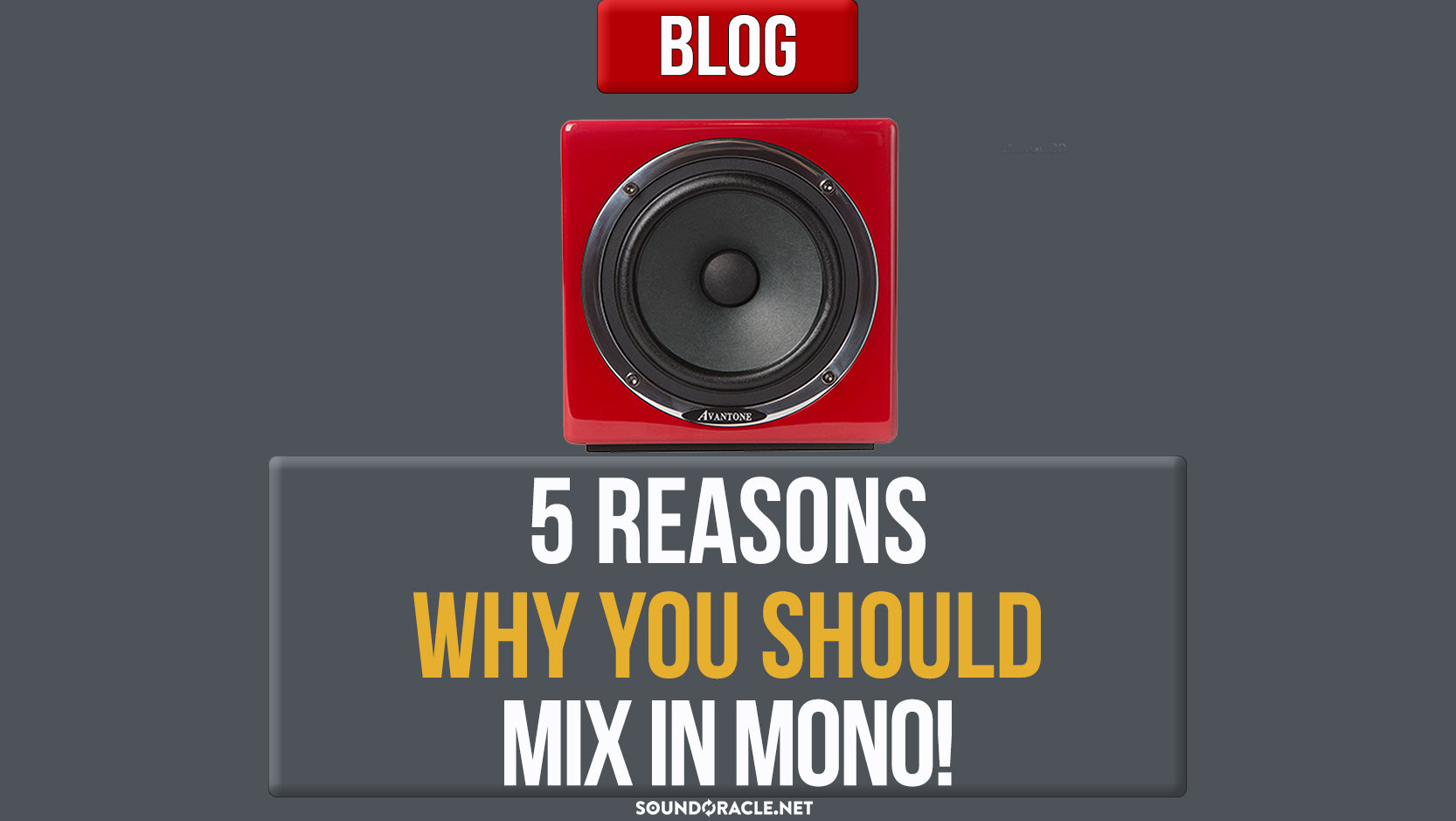5 Reasons Why You Should Mix In Mono!

5 Reasons Why You Should Mix In Mono!
Written By: Eric “Realistic” Michael
Mixing in mono is a classic technique that lots of professional engineers swear by. Though this technique has been used countless times since the beginning of music recording and hasn’t disappeared from the mixing scene, mixing in mono has become a big discussion again in recent years due to Kendrick Lamar’s Engineer - Mixed By Ali - publicly talking about his mixing techniques in mono.
Mixing in mono can be a challenge at times; however, the struggle is well worth it. This technique can really help improve your mix quality, and it may even be the missing step you need to bring your mixes to the next level.
It’s a good idea to reference back & forth between stereo & mono. Usually we recommend starting out in stereo for a little bit by adjusting all your levels & panning & then mixing in mono for a little bit to smooth out clashes/problem areas & then switching back to stereo to finish the mix.
If your interface has a mono switch, simply push the mono button & your speakers will collapse to mono. If your interface doesn’t have one, most DAWs have a stock plugin called utility, gain, or mix down that will allow you to put it on your master channel & collapse to mono. You can also download a free plugin called Panipulator that has a mono switch on it.
Let’s dive into a few reasons why mixing in mono can be so effective!
1. You Will Hear Frequency Clashes Better.
One of the things that can be tricky with mixing in stereo is that we’re able to hide frequency clashes sometimes by simply panning things. Although this is a pretty effective way to separate clashing instruments from each other, it can help the overall quality of the track to still remove those clashing frequencies. When frequencies clash, they can add unwanted artifacts to your mix like clipping, distortion, crackling, & hissing.
When mixing in mono, there’s no place for frequency clashes to hide. If anything is even slightly clashing, it will be very apparent in mono. Since everything is being funnelled right down the center of the mix, everything is fighting for the same space. This allows us to hear everything that is fighting & smooth it out.
The low end is one of the key things that benefit from mixing in mono. Especially when it comes to the relationship between the kick & bass.
2. You Will Hear Dynamic Processing Better.
Collapsing your mix to mono will really showcase what your compressors are doing. The attack/release times & the overall gain reduction will be more apparent in mono. This is a good way to tell if something is too dynamic/poking out too much or if something is too compressed & sounds squashed. Figuring out your compressor parameters while in mono is always a good starting point.
3. You Will Hear What’s Out Of Phase.
One of the most important things that mixing in mono will help with is hearing what’s out of phase or if anything is being cancelled out in the mix. Lots of stereo tools like imagers, spreaders, & wideners achieve a wide stereo sound by shifting one channel out of phase. Though these tools can definitely help to achieve that big & wide sound, it’s always good practice to check them out in mono to make sure they’re not completely cancelling each other out.
If you have a wide mix in stereo & then seem to lose a lot of your mix in mono or instruments completely disappear, then you are probably experiencing phase cancellation. Collapsing to mono will help you make the proper adjustments to getting your sounds back & not cancel each other out. Chances are, it will sound even better when you switch back to stereo!
4. If It Sounds Good In Mono, It Will Sound Good Anywhere!
If you’ve ever collapsed your session to mono, your mix probably sounded muddier & not as clean as it did in stereo. Mixing in mono is more of a challenge since everything is competing for the center & there’s only one channel for sounds compared to the two channels we get in stereo. It takes time & is a bit challenging to get a clean sound in mono, but if you can achieve a great sounding mix in mono, you’ll have an awesome sounding mix in stereo. As soon as you switch back to stereo, you’ll notice an even clearer sound & a much more well-balanced mix.
5. Some Devices Are Still In Mono.
Believe it or not, there are still some cases where someone may hear your song in mono. Lots of Bluetooth speakers & some smartphones still only have a mono output. One of the points of mixing is making sure that the song sounds good throughout multiple systems & devices. Nothing is more disappointing than playing one of your tracks for someone on a Bluetooth speaker only to find out that lots of instruments are missing due to phase cancellation & you’re hearing lots of distortion/clipping due to frequency clashes. BUT if you check your mix in mono throughout the mixing process, you’ll be able to hear those issues prior & remove them so your mix will sound awesome on any system.
Another thing to consider is that it will be highly unlikely that your listener will hear your mix in true stereo. How often does a listener sit directly in front of two speakers perfectly in the center of them? Not very often. When someone is in the car, they’re closer to the left speaker while driving or the right speaker while on the passenger side. Even in the backseat, most people don’t sit right in the center. If someone is listening to music at work or while doing chores around the house, they’re moving around a lot & the sound of the two speakers is never hitting their ears directly at the same time. If you have an unbalanced mix, it can be more apparent as the listener is moving around or is at separate distances from both speakers.
Once you start mixing in mono, you’ll hear instant improvements in your mix. You can easily achieve pro level mixes every time by a combination of mixing in mono, mixing at low volumes, using reference tracks, & having proper headroom in your mix.
We're offering 30% off of all mixing courses until December 2nd!
THE ART OF VOCAL MIXING VIDEO COURSE
Learn how Auto-Tune & Melodyne Work!
These days it's pretty standard for a vocal mix to have some form of pitch correction applied to them. That's why we felt it so was important for us to dedicate entire chapters to both Auto-Tune & Melodyne. We'll show you how every parameter & tool works in both of these powerful software's & we even show you some fun FX you can create with both software! The Art Of Vocal Mixing is our brand new online course & it's packed with over 150 videos & 14 hours of professional mixing skills & techniques. What's included?
THE ART OF BEAT MIXING VIDEO COURSE
Producers have eagerly been awaiting this groundbreaking video course & it's finally available to access. Giving your beats a professional mix is a standard that's expected from major labels & publishing companies when trying to get your beats placed. Our brand new coursework will teach you everything you need to know to ensure your beats have an outstanding mix & loud clean master. Save thousands of dollars by not having to enroll in school & save hundreds of hours from watching the wrong the tutorials.
What's included?




